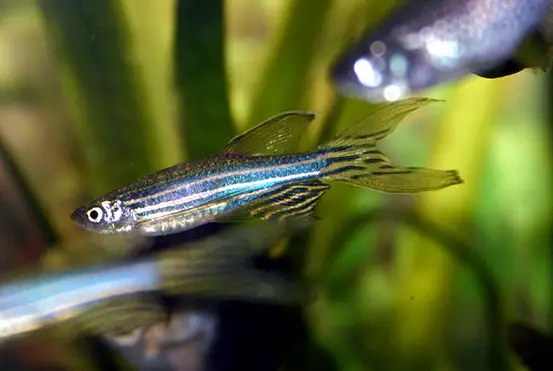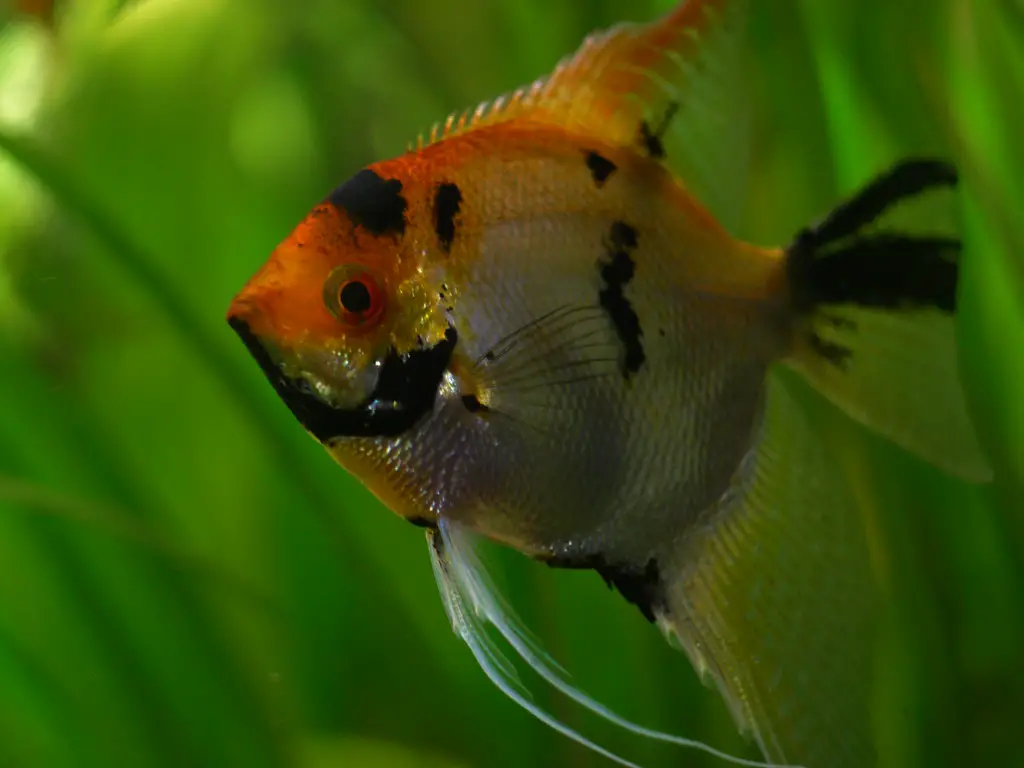Once your fish tank is set up and you are excited about aquatic life in your first aquarium. However, there are several choices you have to make regarding selecting your first aquarium fish. There are some species of beginners freshwater fish that are easy to take care of and will look impressive in your aquarium.
Fishkeeping is an exciting hobby once you start your own freshwater aquarium. There are different species of fish that can enhance your fishkeeping experience. For that, you must know what species of fish are easy to handle, and suitable for beginners like you. Some fish might be very sensitive to water changes, some species might not be comfortable with the other species of fish. These are the things that are necessary to keep in mind before you start your fishkeeping journey.
It takes a lot of experience to be able to master the fishkeeping hobby. Also, until you are better at knowing what your aquarium needs are, you can start off with the basic guides to freshwater fish for beginners. So, let’s dive into the guides to the best fish for beginners like you.
Before getting a fish for your tank, you should decide which fish to have in your aquarium. Whether you want to set a community tank, do you want to keep bigger fish? Do you want your fish to stay small? And so on.
If you want a community tank you need to choose suitable tank mates and must first research the fish you want to keep and examine their compatibility, or else your first experience in keeping fish will be a disaster.
Let’s look at some of the popular types of freshwater fish and learn more about them.
Characteristics Of A Best Beginner Freshwater Fish
Beginner fish are those who are easy to handle when you first start fish keeping. As a beginner, you’re prone to make mistakes, and not all fish can survive the abuse or incorrect water parameters. In the fishkeeping world, this is called ‘hardiness’. They are the fish that are most likely to survive abuse or improper condition. These fish are good for beginners as they don’t know how delicate a fish might be.
Besides the hardiness of the fish, we must also look into other characteristics of a beginner fish such as being community-friendly, smaller size, and who doesn’t make a lot of waste. These traits are important if you’re starting an aquarium. A lot of fish keepers don’t follow these guides and do whatever they feel like doing. This causes the death of many fish and you don’t have to worry about fights among your fish.
Moreover, a beginner fish is very peaceful and gets along with other fish. It is easier to take care of them and will not give the owner much burden. They don’t require much attention and feel comfortable in your tank. The list below mentions all the beginner fish that you might want to look into before you think of building your own aquarium full of different fish.
16 Best Fresh Water Fish For Beginners
After you know what beginner fish is about you might want to explore more about what kind is suitable or what fish are called beginner fish. The list below is the best freshwater fish for beginners.
The Zebra Fish (Zebra Danio) – Beginners Freshwater Fish
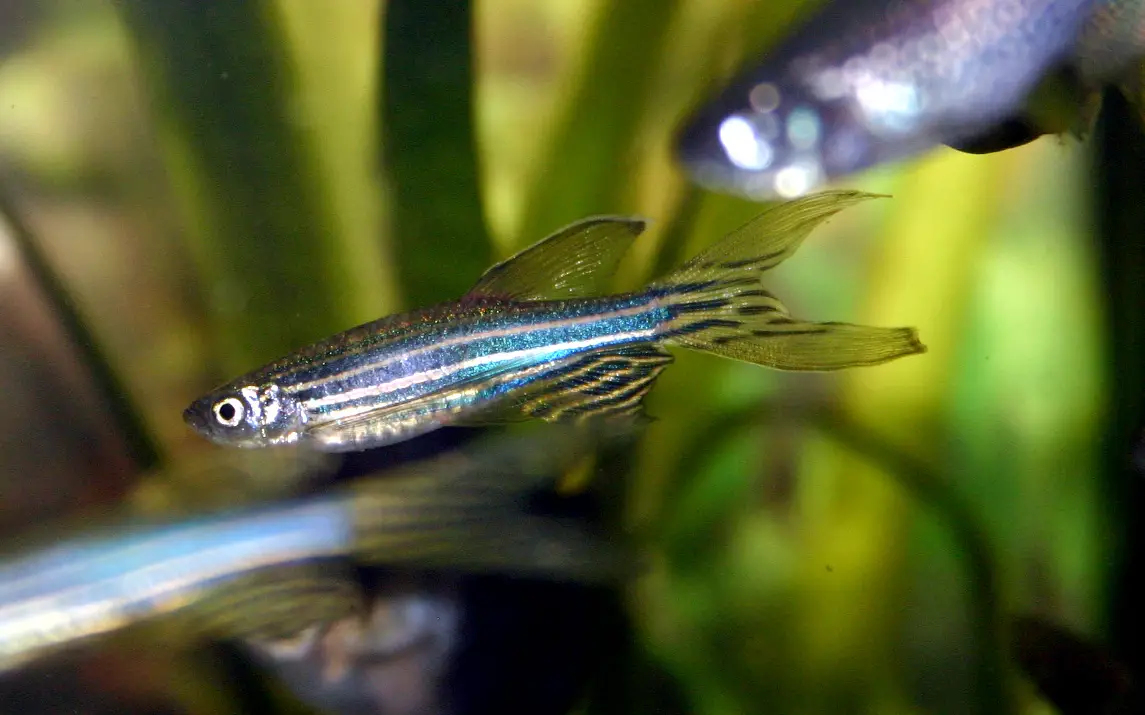
Zebra Danio Facts
- Appearance/Color: Fluorescent red, green, blue, orange, yellow, and purple forms with zebra-like stripes
- Average size: 2 inches
- The required size of the tank: 10 gallons
- Aquarium Hardiness: Very Hardy
- Water temperature: 70 to 78 Degrees Fahrenheit
- Average lifespan: 3.5 years
Overview Of Zebra Danios
Zebra Fish is the most common beginner’s freshwater fish. Danio requires minimal care and does not require high requirements.
Straight away when you look at a Zebra Danios you will notice the mesmerizing pattern in their body which resembles a zebra. They have these stripes which is a signature mark to indicate a Zebra Danios. They are active swimmers and don’t complain much about the water temperature.
Likewise, they don’t have a preference for water temperature and are even cozy in temperatures lower than 70 degrees Fahrenheit. They are known to be community fish and go well with fish of their size. Their best buddies include cory catfish, barbs, and swordtails. Zebra Danios must be kept in schools of 5 or more as they don’t feel comfortable around certain species of fish such as guppies, bettas, and angelfish.
Their diet consists of undemanding food such as veggies and lives or frozen food items but they eat almost everything you throw at them. These fish are loyal to their breeding partners and stay with them for life.
Danio live in a group, so you should consider keeping at least 4-5 pairs of danio. Zebrafish require plenty of space for swimming.
Goldfish

Goldfish Facts
- Appearance/Color: Orange-gold in color
- Average size: 4 inches
- Required size of the tank: 20 gallons
- Aquarium Hardiness: Very hardy
- Water temperature: 65 to 72 Degrees Fahrenheit
- Average lifespan: 10 to 14 years
Goldfish are the most preferred species of fish for beginners. If you don’t keep them right it can turn up your worst beginner fish because goldfish produce a lot of waste that can convert into toxic hampering your fish and tank water.
Overview Of Goldfish
Goldfish are the most common fish that you can find in anybody’s home. They are the most hardiest freshwater beginner fish. They don’t even cost that much and buying multiple at once is always good for goldfish because they enjoy the company.
Goldfish also don’t need any fancy equipment because they are okay with the room temperature or can even withstand a colder temperature. For a size comparison, the average size of a goldfish is about 4 inches but they can also grow up to 14 inches in the wild. You will just need a normal filter with an air pump in a 20-gallon tank and perform 10-15% water changes weekly. While they’re mostly kept in small bowls, it is not recommended because maintaining the quality of the water will be difficult.
For food, goldfish can eat most of the things you feed them as they are not that picky eaters. Dried fish, pellets, flakes are the most common food for them. Goldfish will also eat boiled vegetables such as peas. You can decorate your aquarium with plants that remove the waste if you’re planning on keeping more than one goldfish.
Guppy – Beginners Freshwater Fish
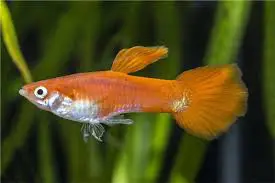
Guppy Fish Facts
- Appearance/Color: Mostly gray in color and males have splashes or spots
- Average size: 0.6 to 2.4 inches
- Required size of the tank: 5 gallons
- Aquarium Hardiness: Hardy
- Water temperature: 72 to 79 Degrees Fahrenheit
- Average lifespan: 5 years
Overview Of Guppy
Guppy fish is one of the types of livebearer fish that gives birth rather than laying eggs. And livebearers are one of the most common beginner fish in the fishkeeping hobby.
They are one of the most useful inhabitants that eats mosquitoes and larvae in the aquariums. They are known to control mosquito-borne disease by eating all the larvae inside the tank that the female mosquito leaves for the hatch.
In fact, their favorite food is the mosquito larvae and the eggs of the mosquito and they can eat many larvae in a day. They are not specified by colors as they are found in many different colors and patterns. The most common thing is that they are mostly gray in color with males having splashes or spots like pattern. As they are highly fertile there are an infinite number of color combinations that these species come in. If you were to breed two guppies you can expect a lot of guppy babies so keep that in mind.
Guppy fish aren’t demanding fish at all, they eat the larvae and don’t even require special equipment in the aquarium for their survival. Other than that, being an omnivorous species, they also feed on frozen, dried, or even live vegetables in small pieces of course. They can even go days without food.
Pairing them with fish of the same size can be justified with the peaceful nature of the fish, however, you should avoid pairing them with larger fish as they might eat the guppies.
Guppies are one of the most common beginners freshwater fish which can tolerate a range of water condition. They are small fish and relatively inexpensive and easy to take care of. Aquarist chooses guppy as their beginner fish due to their brilliant tail colors, patterns and ease of breeding.
Betta Splendens Beginners Freshwater Fish
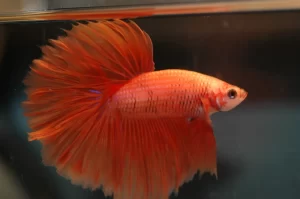
Betta Facts
- Appearance/Color: Red or brown with blue or red fins
- Average size: 3 inches
- The required size of the tank: at least 3 gallons
- Aquarium Hardiness: Hardy
- Water temperature: 78 to 80 Degrees Fahrenheit
- Average lifespan: 3 to 5 years
Overview Of Betta Splendens
Betta Splendens or common name: “Bettas” and “Siamese Fighting Fish” are popular tank fish known for their bright colors, personality, and low maintenance cost.
Betta Splendens are one of the most beautiful looking beginner-fish you can find. They have long and flowing fins and comes in different colors such as yellow, red, turquoise, etc.
It has varieties of colors with different shapes of the tale, seen in a single container or tank in both office and home.
They are pleasing to look at due to the wide color combination of this fish. They aren’t the friendliest of the species of fish you can find so, you can pair them with a single male with multiple females.
The perfect temperature for this species is warm water so you need a water heater to keep them survive for long. They are perfectly fine to be paired with other smaller fish species but keeping them with similar species of fish can be a bad choice.
They are carnivores in nature so their diet mostly consists of insects and other mosquito larvae. You can feed them normal flake food, frozen dried food but you need to additionally feed them live food later. They mostly breed when they reach a year old because unlike other fish they don’t have a longer lifespan.
The betta has the special ability to breadth oxygen from the air, furthermore, it takes in oxygen from their gills. In short, they can survive for a limited period of time out of the water. Also, Betta can adjust to small space and unfiltered water and do their best on small face aquarium.
Black Molly – Beginners Freshwater Fish
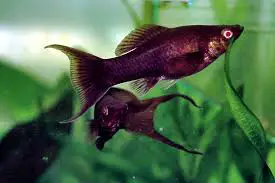
Molly Fish Facts
- Appearance/Color: Mostly white, orange, and black
- Average size: 3 inches
- Required size of the tank: 10 gallons
- Aquarium Hardiness: Hardy
- Water temperature: 75 to 80 Degrees Fahrenheit
- Average lifespan: 5 years
Overview Of Molly Fish
Black Molly is also one of the types of livebearers. If you have a small tank that cannot house a bigger fish then molly are a perfect choice. Black molly requires a water temperature of 22-25 degrees Celsius.
Molly fish are mostly famous for being hardy and adaptable. Their natural habitat is freshwater rivers but can also survive in brackish water. They are also known to have diversified habitats as they can survive at different temperature ranges. You can find them in a variety of colors and even sizes. Another good thing about mollies is that they are the least demanding and are suitable for beginner fish keepers.
Molly fish are good enough in small tanks but as they grow a roomy tank would be perfect as they are quite active. They find bigger tanks to be calm and peaceful. If you’re thinking of keeping them in a crowded environment, they can act aggressively so better to find a bigger tank for it.
Just like the guppies, they are friendly with tankmates that are similar in size. For the betterment, you can keep females in groups with few males. Doing this females don’t feel taunted by the males and it also makes the breeding more sensible.
Mollies are omnivorous fish but they tend to eat more plants as they require the minerals and fiber from the veggies such as lettuce, cucumbers, etc. Besides that, mollies also feed on algae, frozen, dried, and live food as well. As omnivorous fish, they also feed on bloodworm, shrimps, and tubifex.
Swordtail – Beginners Freshwater Fish
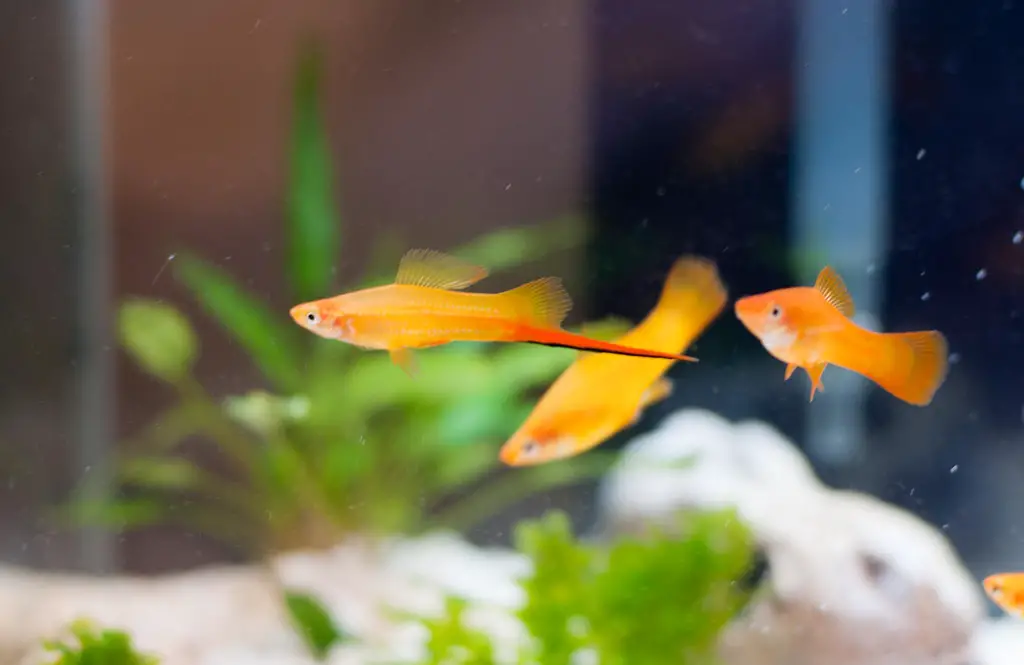
Swordtail Fish Facts
- Appearance/Color: Generally olive-green with yellow and red streaks along two sides
- Average size: 5.5 inches
- The required size of the tank: 15 gallons
- Aquarium Hardiness: Very Hardy
- Water temperature: 65 to 82 Degrees Fahrenheit
- Average lifespan: 5 years
Overview Of Swordtail
Swordtail is another type of livebearer that comes in different colors with the male being easily identified by their signature tail like a pointed sword.
Swordtail is one of the most beginner-friendly fish that you can find in the aqua world. They are comparatively larger than most of the beginner fish you find in this list. One of the ways you can distinct this fish from the others is that this fish has a long bottom fin that looks like a sword. Due to its hardy characteristics, this fish can survive in most of diverse water situations.
Swordtails come in a variety of colors from olive-green to even red which the red part stretches along the body of the fish. The behavior of this species is that they are not schooling fish but they live in groups, so it better to keep in a group of five.
Regarding the fish size, the tank size should also be relatively larger, and the lid up-top should also be closed because they can jump out of the aquarium. The males and females relationship is not that great because the males can sometimes go aggressive on the females. So, you should keep one male with at least two or three females in one tank. Other buddies might include, platies, angelfish, and even molly fish.
Swordtails aren’t picky eaters so they’ll eat anything that has been given to them. For instance, shrimps, fruit flies, flake food, bloodworms, and even mosquito larvae.
The Angelfish

Angelfish Facts
- Appearance/Color: Most common are silver with black stripes
- Average size: 6 inches
- Required size of the tank: 55 gallons
- Aquarium Hardiness: Relatively Hardy
- Water temperature: 78 to 84 Degrees Fahrenheit
- Average lifespan: 10 years
Overview Of Angelfish
Angelfish are one of the most beautiful freshwater fish but they are slow. Since they are slow they are not as active as other fish.
Angelfish come in different colors such as silver, black, white, or even gold but the most common ones that we see on T.V. are the silver ones with black stripes. They are not the ones to be sharing aquariums with because of their aggressive nature. While feeding, they might come up top to the surface for food but aren’t picky eaters.
You can feed them live, frozen, flake food and not worry about them not eating. But make sure you give their partners as well because due to the aggressive behavior they might eat it all. These fish are suitable in taller aquariums that are slightly soft and acidic with minimum company as they might become aggressive in crowded aquariums. Making them stay with tiny fishes, the angelfish might mistake them for food, so keep them away.
The water temperature they prefer is warm water but they’ll be just as fine with cold water. Angelfish is considered community fish and must be kept in a clean large-sized tank with proper filtration. For breeding angelfish, you must keep the male and female in a separate tank together and ensure a healthy diet.
You need to have a great quality of water since they are sensitive to nitrates.
Tiger Barb
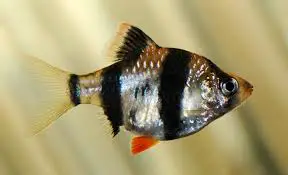
Tiger Barb Facts
- Appearance/Color: Varies however generally silver or gold with black strips
- Average size: 2-3 inches
- Required size of the tank: 20 gallons
- Aquarium Hardiness: Easy to Moderate
- Water temperature: 77 to 82 Degrees Fahrenheit
- Average lifespan: 5-7 years
Overview Of Tiger Barb
If you want some active and hardy fish, the small striped Tiger Barb fish are exactly what you need. They are one of the schooling fish that lives in a group, with perfect synchronized movement making them very entertaining.
The tiger like black stripes on their golden or yellowish body is what make them unique and fascinating. However, their temperament will remind you of tiger as well if you keep them alone or with less than 3 of them in the tank withy other slow-moving fish.
They will bully fish like angelfish if you keep them together. So, I suggest you to keep at least half dozen of them if you are going for community tank. And even then please do not plan on keeping slow-moving, long-finned fish with these tiger barbs.
Platy – Beginners Freshwater Fish
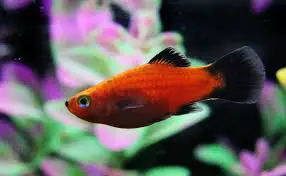
Platy Fish Facts
- Appearance/Color: Black, blue, brown, green, gold
- Average size: 2 to 3 inches
- The required size of the tank: 10 to 20 gallons
- Aquarium Hardiness: Hardy
- Water temperature: 70 to 77 Degrees Fahrenheit
- Average lifespan: 3 years
Overview Of Platy Fish
Platies are one of the favorites among beginners freshwater fish because they require little to no maintenance. Like other fish, the males have more coloration and thinner body while females are gray in color with a colorful tail.
Platy fish comes in a variety of colors ranging from back to even gold. This species will be an eye-catcher for sure due to variations in colors and patterns in their body. They are community fish and prefer the company of fish like guppies, tetras, mollies, and other similar sizes of fish.
For food, you can feed them with frozen, live, or even earthworms, mosquito larvae, and other micro worms. Platy fish are easy to breed and don’t need special attention. They are also tolerant of water conditions and can live peacefully due to the hardy nature.
Platies are easy to keep and like alkaline water. They require frequent water changes as this will keep your fifth healthy and happy. As long as they are kept with similar sized fish you don’t need to worry about them being eaten up. They also get along with any fish.
Due to their bright colors, for people who have an interest in fishkeeping, they are really the ultimate beginner fish. Also, while talking about the numbers, more females should be kept than the males as the males easily abuse the females that constantly attempts to breed peacefully. Other than that, you can simply put a male and a female for the breeding process, and you can immediately see small fry swimming in the aquarium.
Neon Tetra
Neon Tetra Facts
- Appearance/Color: Turquoise blue in color
- Average size: 1.2 inches
- Required size of the tank: 20 gallons (for 15 tetras)
- Aquarium Hardiness: Hardy
- Water temperature: 68 to 82 Degrees Fahrenheit
- Average lifespan: 10 years
Overview Of Neon Tetra
Neon Tetras are tiny species of colorful fish that have a turquoise blue line that stretches from its nose to the adipose fin which is a fin that is located between the tail and the dorsal fin. Their belly however is silver in color.
Don’t underestimate the size as they can be appealing to the eyes with the colors in their body. These colors are not just for the looks but also for their health indications. While the rich colors indicate that the fish is happy and healthy, the poor and faded colors indicate stress and have poor health. While in this stage, the owner must take the necessary steps and diet to maintain the rich colors of the fish.
They are peaceful in nature while keeping them with similar sized fish but larger fish might mistake them for food so keep them apart from larger fishes. The tetra community is a very active community and a good company to them would be small tetras, rasboras, and other smaller species of catfish.
Neon Tetras are omnivores and their diet includes live, frozen, dried food and also shrimps and bloodworms like other species. For breeding, they require a particular water condition else you might need to transfer them to a different tank for breeding.
White Cloud Minnow
White Cloud Minnows Facts
- Appearance/Color: Silver and green scales with pink black stripes along the tail
- Average size: 1.5 inches
- The required size of the tank: 10 gallons
- Aquarium Hardiness: Very Hardy
- Water temperature: 64 to 72 Degrees Fahrenheit
- Average lifespan: 5 years
Overview Of White Cloud Minnow
Most people get confused White Cloud Minnows to Neon Tetras due to the similar size and colors. But a thing to note is that if looked into carefully you can notice the color difference and they are also much cheaper than Neon Tetras.
They are kept in similar numbers as the Tetra but when kept in loneliness they can lose their color or even look faded. For beginners, these fish are a great choice but keeping them in the same tank as larger fish, they can feast on your minnows. These fish are not suitable to keep in warm water and prefer colder water temperature. They are not that demanding in terms of water temperature but keeping them at room temperature will be just fine.
The temperature of the water also denotes their color as optimal temperatures help them gain a boost in their body color and make them brighter.
In terms of feeding them, they’ll eat anything such as live, frozen, and flake food. They’ll also eat shrimps and mosquito larvae just like guppies.
Cherry Barb
Cherry Barb Facts
- Appearance/Color: Bright red color across their entire body
- Average size: 2 inches
- The required size of the tank: 5 gallons per cherry barb
- Aquarium Hardiness: Hardy
- Water temperature: 73 to 81 Degrees Fahrenheit
- Average lifespan: 4 years
Overview Of Cherry Barb
Cherry barb is one of the perfect fish to settle in the new tank. They settle well in freshwater aquariums because they can withstand big water changes. These fish are very friendly in nature and they only tend to grow up to two inches. They are easy to take care of and is also one of the most endangered species in the wild.
They are eye-catching and one of the favorite species of fish in the fishkeeping community. Cherry barbs are very active in nature and once they feel comfortable in their new environment they are entertaining to watch.
It is one of the most beginner-friendly fish that it gets settled and secure quite fast. Surrounding them with live plants helps them play along with their friends. They are recommended to keep in schools and the recommended number of cherry barbs in an aquarium is above 6 anything below this number will make them passive and will survive less.
Talking about the diet, cherry barbs eat any type of fish food, don’t worry if yours doesn’t because it’ll take some time for the fish to adjust to the current scenario. You can provide them with flake, fried or live items they’ll be eating comfortably in a matter of weeks or even within few days.
FireMouth Cichlid
FireMouth Cichlid Facts
- Appearance/Color: turquoise blue with red coloration on the edges
- Average size: 6 inches
- The required size of the tank: 30 gallons
- Aquarium Hardiness: Very Hardy
- Water temperature: 75 to 80 Degrees Fahrenheit
- Average lifespan: 8 to 10 years
Overview Of FireMouth Cichlid
Fire mouth cichlid may seem to be a big fish to be seen as a beginner fish but they are perfect for new fishkeepers. They are relatively friendly when it comes to their behavior but can be territorial during breeding season. Also, they form this red coloration only during breeding so the colors can sometimes be mesmerizing to look at.
During the breeding season make sure to keep them with species that are less aggressive and also keep rocks or pots where they can safely lay their eggs. Fish such as plecos, giant danios, African red eye tetra can go well with this species of fish. It can reach up to a length of 6 inches so it can pretty much dominate whatever comes in its way.
Their diet includes regular flake food and worms as well. They also prefer frozen and live food. Regarding its hardiness, this fish isn’t hard to keep for beginners and is perfectly fine if you’re looking for cheap fish to start your aquarium journey.
Tiger Pleco
Tiger Pleco Facts
- Appearance/Color: Yellow base with tiger-like stripes
- Average size: 5.5 to 6.3 inches
- The required size of the tank: at least 55 gallons
- Aquarium Hardiness: Hardy
- Water temperature: 77 to 84 Degrees Fahrenheit
- Average lifespan: 10 to 15 years
Overview Of Tiger Pleco
The name itself is enough to tell that this species of fish spends most of the time at the bottom of the tank. Tiger Pleco was originated from South America and is one of the peacefully living creatures you’ll ever come across. This is one of the reason it is listed as a beginners-friendly fish.
They are very territorial as well so while keeping more than one Tiger Plecos fishkeepers suggest that you keep your bottom of the tank busy with rocks and stones so they can take over the place to live peacefully.
They can grow up to a length of 6 inches and have a very long life span. If you can properly take care of this fish it can even last up to 15 years. For this, the tank conditions must be very optimal, and a proper diet should be maintained.
The diet consists of sinking food such as pellets but they also feed on shrimps and bloodworms. If not treated properly they can even feed on your plants but if you fail to do so they can eat up your plants as well.
Cory Catfish
Cory Catfish Facts
- Appearance/Color: Green, black, bronze, and albino
- Average size: 2.5 inches
- The required size of the tank: 20 gallons
- Aquarium Hardiness: Hardy
- Water temperature: 74 to 80 Degrees Fahrenheit
- Average lifespan: 5 to 7 years
Overview Of Cory Catfish
Cory Catfish are known for their friendly behavior with other fish. These fish are perfect for beginner fish keepers as they also help keep the tank clean. One of the leading features of this fish is the tendency to clean the aquarium that it lives on. They do this by eating all the algae around the tank which is build up at the bottom of the tank and eat all the larvae as well.
In the wild, these creatures can live up to 20 years but for home aquariums, they can sustain to about 7 years. They are best kept with a group of at least 3 in a tank. Their diet includes a variety of veggies that are likely to sink at the bottom of the tank, insect larvae, and blood worms. Like said earlier their diet also consists of algae that is build up over time in the aquarium.
Cory Catfish are very active during the daytime but they can also slack off resting at the same spot. At night time they don’t move as much and prefer to rest during the night time. They are social creatures and can survive alone but it is much preferred to be in groups. The tank mates of this fish species include community tank fish such as Tetras, Swordtails, and other Corys. These are the reasons for Cory Catfish to be popular with beginner fish keepers.
Black Skirt Tetra
Black Skirt Tetra Facts
- Appearance/Color: Silver with black stripes
- Average size: 3 inches
- The required size of the tank: 15 gallons
- Aquarium Hardiness: Very Hardy
- Water temperature: 70 to 85 Degrees Fahrenheit
- Average lifespan: Between 3 and 5 years
Overview Of Black Skirt Tetra
Black Skirt Tetra is a good choice as a beginner freshwater fish because of its active behavior and hardiness. These species have a black dorsal and anal fins and a black body stripes which give them a signature mark. The colors that you see in a black skirt tetra can vary as they are done with artificial dyes which is not preferred as it can shorten their lifespan.
Black Skirt Tetra are schooling fish so you must keep them in a group of at least 3. They are also excellent community fish as their peaceful nature goes well with other groups of fish. However, keeping them with angelfish or bettas is a bad idea as a black skirt tetra can nip their long fins.
Their diet includes frozen, flaked, or dried food but they also feed on shrimps, worms, and spirulina. Black skirt tetra prefer plants around them so keeping them in a well-planted aquarium is a must. They mostly like warm water as cold water can make them prone to various diseases.
Tips For Beginner Freshwater Fish Keepers
Necessary Equipment
- Invest in a decent filter.
- Air pump.
- Heating and lighting.
- Gravel.
- Plants and rocks.
- Decent placement for your tank.
- The bigger than the tank, the better.
Setting Up The Tank
- First, remove the tank from the box.
- Find a sweet spot for your aquarium and place it in a good position.
- Rinse all the gravel and materials that you have purchased to keep inside the tank.
- Fill your tank with tap water.
- Turn on both the filter and the heater.
- Add in the treatments.
- Allow your tank to cycle and create a healthy biological filter.
- Put your fish and keep testing your water.
Maintenance
- Cycling the water.
- Adding water conditioner.
- Frequent change of the water.
- Maintaining the water temperature accordingly.
- Avoid overcrowding.
- Cleaning the tank time and often.
Smaller Tanks Are Harder To Maintain
The smaller the tank size, the harder it is to maintain because in a 10-gallon tank, if you put many fish and overcrowd the tank, there would be much more waste accumulation which will seek your time and attention. This also causes frequent water changes because it gets dirty soon. The fish also gets a disadvantage as it cannot grow to its proper size in a small tank.
Final Thoughts
If you’re thinking of starting your own aquarium journey and you’re confused about what fish to get started with, this list will definitely help you find your starter. Select the ones who you think you can take care of easily and don’t need to spend much time on them because as beginners freshwater fish they can pretty much take care of themselves.
Before you add fish to your tank, keep in mind to cycle your aquarium so that it’s a safer environment for your new fish. As a beginner, you’ll most likely prefer brighter fish that comes in different colors so Tetras, guppies, and mollies might be a good start for you. Also, community fish have similar tank requirements so keeping them together is no problem.

